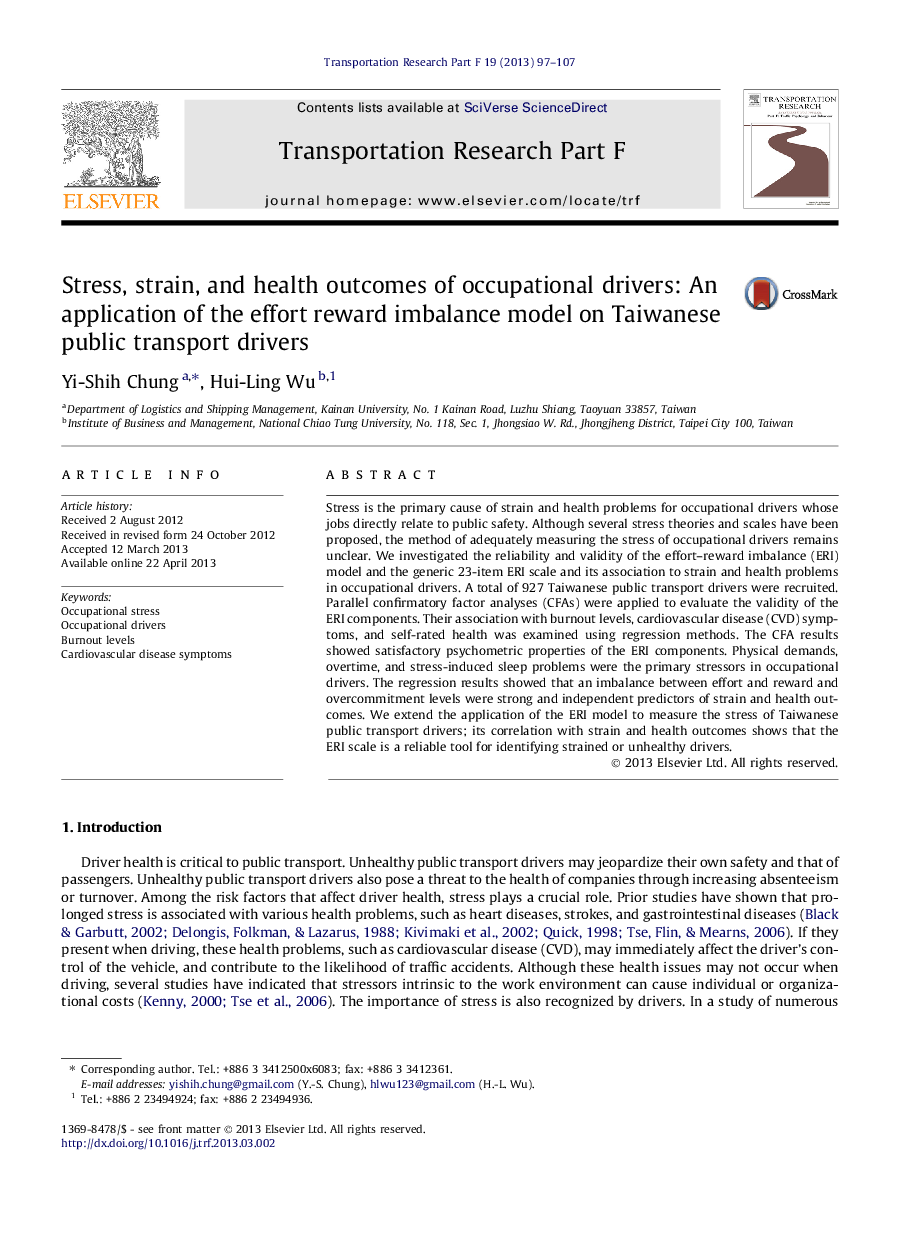| کد مقاله | کد نشریه | سال انتشار | مقاله انگلیسی | نسخه تمام متن |
|---|---|---|---|---|
| 897813 | 1472461 | 2013 | 11 صفحه PDF | دانلود رایگان |

• This study extends the application of the effort reward imbalance (ERI) model on public transport drivers.
• The results indicated satisfactory psychometric properties and factorial structure of the ERI components.
• Effort reward imbalance and overcommitment were strong predictors of burnout, CVD symptoms, and self-rated health.
• Physical demand, work overtime, and stress-induced sleep problems were the primary stressors in occupational drivers.
Stress is the primary cause of strain and health problems for occupational drivers whose jobs directly relate to public safety. Although several stress theories and scales have been proposed, the method of adequately measuring the stress of occupational drivers remains unclear. We investigated the reliability and validity of the effort–reward imbalance (ERI) model and the generic 23-item ERI scale and its association to strain and health problems in occupational drivers. A total of 927 Taiwanese public transport drivers were recruited. Parallel confirmatory factor analyses (CFAs) were applied to evaluate the validity of the ERI components. Their association with burnout levels, cardiovascular disease (CVD) symptoms, and self-rated health was examined using regression methods. The CFA results showed satisfactory psychometric properties of the ERI components. Physical demands, overtime, and stress-induced sleep problems were the primary stressors in occupational drivers. The regression results showed that an imbalance between effort and reward and overcommitment levels were strong and independent predictors of strain and health outcomes. We extend the application of the ERI model to measure the stress of Taiwanese public transport drivers; its correlation with strain and health outcomes shows that the ERI scale is a reliable tool for identifying strained or unhealthy drivers.
Journal: Transportation Research Part F: Traffic Psychology and Behaviour - Volume 19, July 2013, Pages 97–107